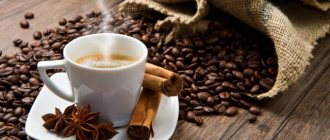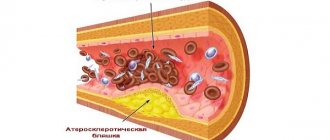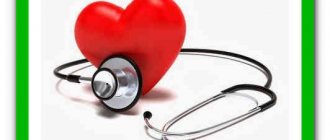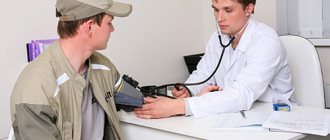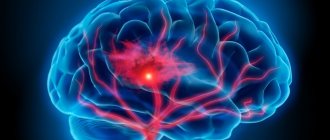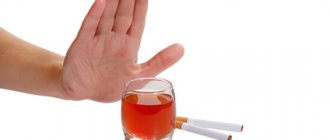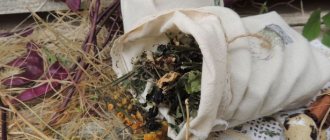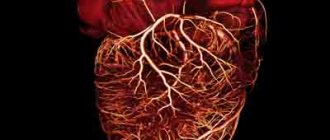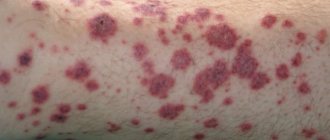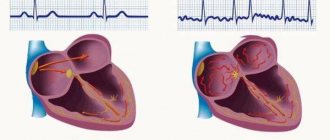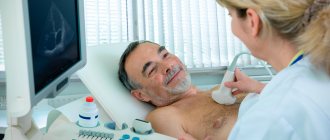Arrhythmia is a disturbance in the functioning of the heart that manifests itself as disruptions in the sequence and rhythm of contractions of different parts of the heart.
Since the heart is a human internal motor that works continuously, cardiac arrhythmia is one of the most common diseases of this organ. Arrhythmia occurs in people of all ages, has many causes and is divided into several types. In extremely rare cases, it occurs on its own. Basically, the source of arrhythmia is other more or less serious disruptions of various body systems, including the cardiovascular system.
At the beginning, an increase in the number of heart beats and their frequency may not be much of a concern, but over time and age, arrhythmia can cause other diseases and generally negatively affect a person’s well-being.
Reasons for development
There are many reasons that provoke the development of heart rhythm disturbances. They are extracardial (outside the heart), cardiac and idiopathic.
Cardiac factors
- Myocarditis of an infectious and non-infectious nature;
- Surgical interventions and diagnostic procedures on the heart.
- Heart failure;
- IHD (coronary heart disease);
- Arterial hypertension;
- Congenital and acquired heart defects;
- Age-related sclerodegenerative changes in the myocardium and conduction system of the heart (replacement of muscle cells of the heart muscle with fibrous tissue).
Extracardiac factors
- Overheating or hypothermia of the body;
- Dysfunction of the autonomic nervous system;
- PMS (premenstrual syndrome);
- Insect bites;
- Increased body temperature;
- Excessive physical activity;
- Stressful situations;
- Drug intoxication (heart rhythm disturbances caused by diuretics, cardiac glycosides, antiarrhythmic and psychotropic drugs, indirect adrenergic agonists);
- Nicotine or alcohol poisoning;
- Caffeine intoxication;
- Endocrine pathologies (hyperthyroidism);
- Organic and functional lesions of the central nervous system;
- Electrolyte imbalance (diarrhea, vomiting, dehydration);
- Pheochromocytoma (adrenal tumor);
- Electrical and mechanical injuries;
- Genetic factors (hereditary cardiomyopathy).
The role of vitamins in treatment
In the fight against heart rhythm disturbances, it is very important to take vitamins that have a general strengthening effect on the body and help normalize metabolism. That is why, in case of arrhythmia, it is necessary to eat a lot of fruits and vegetables, as well as drink vitamin drinks from dried fruits, rose hips, viburnum, and the like.
Positive effects of vitamins for arrhythmia:
• strengthen supporting forces; • tone the patient’s body and have a general strengthening effect on it; • activate metabolic processes in the myocardium and other tissues; • contribute to the normalization of the functioning of the central nervous system; • prevent the occurrence of complications.
Classification and types of arrhythmia
In medicine, there are several types of arrhythmias - each of them has different symptoms and course, so it is necessary to diagnose not just the arrhythmia, but also its specific type - the choice of therapeutic therapy will depend on the results.
Types of arrhythmias:
- Sinus tachycardia. A person's heart rate increases and is above 90 beats per minute.
- Paroxysmal tachycardia. In this case, the heart works as usual, without pathological abnormalities, but the heart beats very quickly - from 140 to 240 beats per minute. A distinctive feature of paroxysmal tachycardia is that the attack always begins suddenly and ends in the same way.
- Sinus bradycardia. This type of arrhythmia is manifested by a decrease in heart rate - in a patient this figure may be less than 55 beats per minute.
- Sinus arrhythmia. Most often diagnosed in childhood and adolescence, it is characterized by an abnormal alternation of heart beats. With this type of disorder in question, no specific treatment is required, the patient’s condition is not disturbed, and the normal rhythm of the heartbeat can be quickly restored by simply holding the breath for a few seconds.
- Flickering arrhythmia. Doctors characterize this type of arrhythmia as fluttering in the chest - the heart begins to contract faster (up to 150 beats per minute), then even faster (up to 300 beats per minute), the atria do not contract completely, and the ventricles do so irregularly.
Please note: ventricular flutter and fibrillation are considered the most life-threatening manifestations of arrhythmia. This usually occurs against the background of heart pathologies, electric shock, or taking certain medications.
- Heart blocks. This also applies to the type of arrhythmia - a condition when the supply of impulses to all parts of the myocardium stops. The pulse disappears, the heart rate decreases catastrophically, the patient may faint, and heart block can also provoke a convulsive syndrome.
Please note: if a patient develops a complete block, it often triggers heart failure, which can lead to sudden death.
First aid for an arrhythmia attack
If you are used to being treated at home, you need to be prepared at any time for the possibility that an arrhythmia attack may suddenly begin. What to do in this situation?
- First you need to take a position so as not to fall and get injured. If you are on the street, try to sit at a bus stop or at least squat down.
- Provide access to fresh air - you need to untie your tie, unfasten your tight belt, get out of the stuffy room.
- While sitting in a chair, lower your head below your knees to allow blood flow to your head.
- Try to calm down and get rid of the provoking factor - stop working, conflicts, drinking alcohol, smoking, etc.
- Try swallowing a hard crust of bread, immersing your face in cold water, holding your breath for a few seconds, pressing on the root of your tongue - all these techniques are very effective for arrhythmia. You can also massage the neck in the collar area and lightly press on the closed eyeballs - all this will help to quickly bring the person to his senses.
- Before the doctor arrives, you can drink something soothing - validol, corvalol, motherwort.
After the first serious attack of arrhythmia, it is imperative to undergo an examination and make an accurate diagnosis. If your arrhythmia persists, your doctor may prescribe you one of four groups of medications. The first are Beta blockers, they are aimed specifically at eliminating the symptom, among them Metaprolol, Bisoprolol, Egilok. Potassium channels allow you to restore potassium balance in cells - these are Amiodarone, Dofetilide. Calcium channels stabilize the heart rate - Amlodac, Brocalcin, etc. Sodium channels protect cells from external aggressive influences. Remember that you can take medications only after the recommendation of a doctor. But some tips for eliminating arrhythmia can be done on your own.
how to get rid of arrhythmia
Symptoms of arrhythmia
Arrhythmia and its symptoms do not always appear. A person can live calmly and not feel an irregular heart rhythm, and a doctor during a medical examination can easily detect it and prescribe treatment even before any symptoms of cardiac arrhythmia suddenly appear.
More often, however, rhythm disturbances appear, which affects a change in the person’s condition. How does cardiac arrhythmia manifest? To understand whether there are any heart problems, you should pay attention to the following signs of the disease when a person:
- feels palpitations and irregular rhythms;
- feels that the heart is beating too fast;
- feels that his heart is beating too slowly;
- experiences chest pain;
- suffers from shortness of breath;
- feels dizzy;
- loses consciousness or is in a state about to faint.
But it happens that such serious signs of an unhealthy condition are not necessarily a manifestation of serious heart problems. Often people, even when they feel arrhythmia, do not have any disease. Conversely, a certain person who does not have any manifestations of cardiac arrhythmia actually suffers from a severe form of the disease, and the factor that caused it is unknown.
Celery
Celery
Among other folk recipes, this one stands apart, since many may find it not only healthy, but also tasty. The technology is simple: grate celery on a medium grater, add turquoise salt, dill, parsley and mayonnaise. Mix everything thoroughly. The resulting mass should be consumed before meals once a day.
Why is cardiac arrhythmia dangerous?
As a result of uneven work, contraction of the atria is replaced by their random twitching. This is the most common and dangerous form, which can result in thromboembolism and stroke (stagnation in the bloodstream promotes thrombus formation, and the clot will prevent oxygen from reaching the brain).
Due to a lack of oxygen, a patient with an arrhythmia may lose consciousness, fall, hit himself hard, or injure himself in some way. An advanced stage of the disease can lead to the development of heart failure, an attack of angina pectoris, or even pulmonary edema, when urgent hospitalization is necessary to save a life.
Arrhythmia in children and adolescents
Heart rhythm arrhythmia in children can occur at any age. In most cases it is a benign manifestation and often appears and disappears spontaneously. However, it is very important to distinguish benign from potentially life-threatening changes. Benign ones are asymptomatic, the patient’s hemodynamics are stable and it does not develop into a life-threatening condition. Does not require treatment, the child can carry out normal physical activity with further supervision by specialists.
Symptoms of rhythm disturbance depend on the age and degree of maturity of the child. Older children may complain of dizziness, and in a child 3 years of age or younger, the disease manifests itself as pale skin, irritability, and lack of interest in eating.
Mild forms are considered:
- sinus bradycardia;
- supraventricular extrasystoles;
- idiopathic ventricular.
To establish a diagnosis, special attention is paid to personal and family history, the patient's age and type.
Sinus tachycardia is usually well tolerated, disappears after the cause is eliminated and does not require special therapy. It is caused by infections, excessive vagal tone, hyperthyroidism, elevated potassium and calcium levels, low temperature, hypoxia, sinoatrial node disease, and the use of certain medications.
Another type is sinus node disease, which can occur after surgery for congenital heart defects. In patients without heart failure, it may develop during inflammation, metabolic or endocrine disorders. Often occurs in adolescents with anorexia who induce vomiting after eating. It is characterized by high variability of symptoms and requires appropriate treatment. Children with symptomatic bradycardia require pacemaker implantation.
Another cause of cardiac dysfunction is supraventricular or supraventricular arrhythmias, which emanate from the atrial fibrillation ganglion. This is a benign condition that can occur in children with or without pathologies.
During pregnancy
The prognosis of pregnancy and upcoming birth depends on how the woman’s heart reacts to expected events. However, we must not forget that pregnancy itself, being an unusual condition, can cause rhythm disturbances and arrhythmia. For example, the appearance of extrasystole or paroxysmal tachycardia during pregnancy, as a rule, does not indicate organic damage to the myocardium, and occurs in approximately 19-20% of pregnant women. And if late toxicosis is added to all this, then you can’t expect anything else from the heart, the arrhythmias will intensify.
This type of arrhythmia, such as complete or incomplete atrioventricular block, does not pose a particular danger to a woman’s health. In addition, pregnancy increases the ventricular rate, so measures are taken only in cases where the pulse drops to 35 beats per minute or below (obstetrics - application of obstetric forceps).
But with organic cardiac pathology, women are treated with increased attention, since the appearance of atrial fibrillation in such a situation is a contraindication to continuing pregnancy. In addition, choosing a method of delivery before term also requires special care. It seems that such a gentle, in other cases, cesarean section in such patients can threaten thromboembolism in the pulmonary artery system (PE).
Of course, no one can prevent anyone from becoming pregnant, so women with heart pathology consciously take risks, driven by their cherished desire - to become a mother. But if pregnancy has already occurred, then the doctor’s instructions and recommendations must be followed strictly: follow a work and rest schedule, take the necessary medications and, if necessary, be hospitalized under medical supervision. Childbirth in such women, as a rule, takes place in a specialized clinic, where a woman can at any time receive emergency medical care (taking into account cardiac pathology) in case of unforeseen circumstances.
What techniques should be used to get rid of arrhythmia?
There are 7 very effective ways to get rid of arrhythmia at home. Their name and effect on the sick person are reflected in detail in this table.
| Method | Effect on arrhythmia |
| Proper nutrition | Relieves weakness throughout the body |
| Physical exercise | Reduce the number of heart beats per minute |
| Taking medications | Relieves severe chest pain |
| Walks in the open air | Saturate the body with oxygen and carbon dioxide |
| Tinctures | Dramatically reduces the risk of loss of consciousness |
| Decoctions | Relieves the feeling of heaviness in the chest |
| Vitamins | Saturate the heart with beneficial substances |
| Wellness treatments | Strengthens the heart and weak blood vessels |
Diagnostics
The very first diagnosis of heart rhythm disturbances is their clinical manifestations . Symptoms of arrhythmia are not similar to those of other diseases; if they occur, an electrocardiogram should be performed. But the diagnosis can be confirmed by recording a cardiogram only if the arrhythmia is permanent or stable. If a paroxysmal arrhythmia is suspected, an electrocardiogram is recorded around the clock. This diagnostic method is called Holter monitoring . It consists of constantly recording heart rate using sensors attached to a compact device. Sometimes it is not possible to detect a violation on a daily basis.
If neither an ECG nor Holter monitoring detects the disease, a more complex diagnosis of arrhythmia is carried out, in which the factors causing its occurrence are determined. This makes it possible to determine the mechanism of its occurrence. Such studies include transesophageal cardiac stimulation . The method is used if sick sinus syndrome is suspected, to clarify the diagnosis and prescribe the correct preventive treatment, if WPW syndrome is suspected, hidden coronary insufficiency, if it is impossible to diagnose coronary heart disease by other methods. The study consists of imposing a rhythm through a specialized electrode, which is inserted like a regular probe and fixed in the esophagus.
Also, to identify arrhythmias, a tilt test . It allows you to identify the cause of fainting. When performing the test, the patient is brought from a horizontal position to a vertical position, with different intensities. The test provokes a fainting state, and monitoring of heart rate and blood pressure during the examination makes it possible to determine the cause of loss of consciousness.
Intracardiac (invasive) electrophysiological study is considered the most informative study of the electrophysiological properties of the heart and conduction system. This diagnosis of arrhythmia is used to clarify the localization of atrioventricular block, the nature of tachycardias and other abnormalities. This study remains very important when choosing surgical treatment and implantable pacemakers. In some cases, intracardiac electrophysiological study is used to relieve severe arrhythmias.
The examination is carried out only in specially equipped laboratories, since this method is quite risky. To carry it out, the main vein of the shoulder, or femoral vein, is punctured. Under X-ray control, catheter electrodes are inserted into the right side of the heart and a study is performed.
See also: All-Russian Scientific Society of Arrhythmologists.
Prevention
To carry out adequate prevention of the development of arrhythmias of any type, it is important to effectively and timely get rid of problems that could become the causes of heart rhythm disturbances. We are talking about such ailments as: the state of mitral stenosis, atherosclerotic cardiosclerosis, thyrotoxicosis, coronary heart disease, hypertension, etc.
In addition, to prevent the occurrence of heart rhythm disturbances, it is necessary:
- Limit the negative impact of external factors that can aggravate the disease - we are talking about smoking, alcohol abuse, constant nervous and physical stress.
Eat right or even follow a balanced diet. Such a diet should exclude excessively fatty, spicy or salty foods, and give preference to healthy, plant-based foods containing many vitamins and microelements.
- Regularly receive sufficient, but not excessive physical activity, ideal for the age of a particular patient.
- Reduce emotional stress in a timely manner and avoid stress.
- Be sure to normalize your sleep.
- Maintain normal body weight.
In addition, prevention of arrhythmia and other cardiovascular problems should include regular examinations with a cardiologist for all people over forty years of age.
To summarize, we note that treating heart rhythm disorders at home is quite possible. But this should always be a treatment prescribed by a cardiologist after an initial examination and examination of the patient. Independent use of any methods for treating arrhythmia is strictly unacceptable!
Unfortunately, independence in the treatment of cardiovascular diseases is often incredibly dangerous for the patient and is fraught with the most serious complications of the primary problems.
Patient Anatoly, 56 years old. A man, undergoing a preventive examination by a cardiologist, complained that he periodically encountered unclear interruptions in the work of his heart, a feeling of shortness of breath and panic. After a detailed examination, a diagnosis was made - coronary heart disease with manifestations of sinus arrhythmia. Comprehensive treatment of ischemia in a hospital setting is recommended, as well as regular preventive examinations by a cardiologist at least once every six months.
Author of the article:
Elena Demidova
about the author
Did you like the article?
Let us know about it -
rate
First aid
Arrhythmia attacks can occur independently and begin suddenly. The attack ends just as unpredictably. If the patient experiences the first attack, call an ambulance immediately. Often, paramedics drive slowly, so you should worry about the health of the victim. Do this:
- reassure the patient, suppress manifestations of panic;
- create conditions for the patient to rest - lay him down or sit him in a comfortable chair;
- try to change the position of the victim’s body;
- sometimes you need to induce a gag reflex - do this with two fingers, irritating the larynx.
What happens next depends on medical workers. The cardiologist will prescribe medications for cardiac arrhythmia later - when the patient is pumped out and a preliminary diagnosis is carried out.
If you see symptoms of arrhythmia, try to interrupt any physical activity.
It is permissible to use sedatives:
- motherwort;
- valerian;
- Corvalol;
- valocordin (within 40-50 drops);
- Elenium.
How to treat?
Treatment of cardiac arrhythmias may differ depending on the complexity and type of cardiac arrhythmia, if the arrhythmia is caused by any external factors, be it smoking, drinking large amounts of coffee, alcohol, energy drinks, overwork, frequent stress, frequent overeating, their consumption should be eliminated or reduced , change your lifestyle.
In the case of more complex types of arrhythmia, correct drug treatment or even, in some cases, surgical intervention is necessary. But also do not forget that you should not self-medicate under any circumstances, as it can only worsen your condition!
Other treatments for arrhythmia
- Arrhythmia is often caused by a lack of microelements in the body, especially potassium, magnesium, calcium, so a proper diet becomes an indispensable assistant. The daily menu should include potatoes, parsley, cabbage, honey, beets, corn, and sunflower seeds. Legumes, buckwheat, bran, and fresh cucumbers can compensate for the lack of magnesium. Fermented milk products (yogurt, cottage cheese, cheese), fish and seafood are very healthy.
- But you need to be extremely careful with animal fats - they provoke thrombotic processes in the coronary arteries. Meat cannot be excluded from the menu, but it should not be fatty or fried. In addition, be sure to reduce your salt intake.
- You should also limit your overall food intake - the pressure of the stomach on the cardiac region makes it difficult for the myocardium to work. In addition, it is easier for a person with normal weight to cope with the arrhythmia that arises.
- Of course, if arrhythmia often bothers you, you need to give up bad habits and the unreasonable consumption of coffee, chocolate, and other sweets. Instead of a morning cup of coffee and a cigarette, it is better to give yourself a vital boost for the day with simple invigorating exercises.
- A complex of breathing exercises according to the Strelnikova system helps with arrhythmia - you can consult a specialist about its implementation. The so-called “vagal maneuver” helps to relieve an attack of tachycardia - holding your breath while straining, “pushing” the air down. By the way, this exercise is borrowed from the famous yoga system.
- There are several other simple techniques for relieving an attack of arrhythmia. For example, pressing your fingers on your eyeballs for a few minutes can normalize your heart rate. A short-term “immersion effect” helps, which can be achieved by lowering your face into ice water for a few seconds.
- Another “vagal maneuver” is a light massage of the carotid artery area on the right side of the neck, from the collarbone to the lower jaw.
And, of course, an important condition for countering arrhythmia is regular walks in the fresh air. The step should be measured, even, as comfortable as possible for the person, and this walking rhythm should always be adhered to - this is how optimal training of the heart muscle is achieved. It is also useful for angina pectoris; read more about the treatment of angina pectoris with folk remedies in another article.
Of course, all measures for the treatment of cardiac arrhythmia with folk remedies must be agreed with the doctor and be part of the general program of health procedures prescribed by him.
Video: Ari
Treatment with medications
This method of treatment involves the prescription and administration of antiarrhythmic drugs, of which there are 4 classes:
Antiarrhythmic drugs
- Verapamil, Digoxin, Adenosine - are prescribed to eliminate atrial arrhythmias.
- Disopyramide, Lidocaine, Mixletine - necessary for ventricular arrhythmias.
- Propafenone, Amiodarone, Flecainide - used for atrial and ventricular arrhythmias.
The most commonly used and effective drug is Amiodarone (Cordarone). It is used in almost all types of arrhythmia. It is the drug of choice for arrhythmia with myocardial infarction and heart failure. Antiarrhythmic activity appears 10 minutes after intravenous administration.
Often, after two weeks after the onset of arrhythmia, Cordarone is taken orally, gradually reducing the dose to a maintenance level, continuing to take it further.
Contraindications to its use: pulse less than 50 beats per minute (bradycardia), bronchial asthma, heart block (atrioventricular AV block), thyroid disease and pregnancy.
Beta blockers
This group of drugs is characterized by antiarrhythmic and hypotensive (lowering blood pressure) effects. Beta blockers lower the heart rate, preventing the development of heart failure.
Their use is contraindicated in the case of chronic respiratory diseases and bronchial asthma, as they can cause an attack of suffocation.
These drugs include:
- Atenolol;
- Metoprolol;
- Propranolol;
- Bisoprolol;
- Sotalol;
- Betaxolol;
- Nebivalol;
- Labetalol;
- Carvedilol;
- Pindolol;
- Celiprolol.
Metabolic drugs
This includes medications that help improve metabolic functioning, as well as nourish the myocardium and protect it from the effects of ischemia.
These include:
- ATP (adenosine triphosphoric acid);
- Panangin, Potassium normin, Kalipoz, Asparkam - potassium and magnesium preparations;
- Cocarboxylase;
- Riboxin;
- Thiotriazolin;
- Mexico;
- Mildronate;
- Preductal MR.
Cardiac glycosides
These are medications that increase the contractility of the heart muscle and normalize blood circulation, reducing the load on the heart.
Glycosides include:
- Digoxin;
- Korglykon;
- Digitoxin;
- Strophanthin.
Hawthorn
Hawthorn, or rather its flowers, is widely used to combat heart disease. There is nothing difficult about preparing medicine.
Hawthorn flowers
- Take 5 grams of dried flowers.
- Fill with a glass of water.
- Boil for 10 minutes.
- We insist for half an hour.
- Filtering.
You need to take this remedy in half a standard glass size three times a day.
Operation
If drug treatment is not effective, you may be offered the following surgical interventions, depending on your type of disease:
- Radiofrequency catheter ablation – for atrial fibrillation, ventricular fibrillation. During this procedure, the surgeon will detect pathological foci in your heart that are causing the disease, using a special sensor on a catheter that is inserted through a large vein or artery of the arm or leg under fluoroscopic control, then using a “therapeutic” electrode, he applies radiofrequency energy to the pathological hearth and destroy it. This procedure is performed under local anesthesia plus sedation, which will help you calm down and relax.
- Ablation of the atrioventricular node and installation of a pacemaker - for atrial fibrillation. This procedure is similar to radiofrequency catheter ablation, that is, it is exactly the same, only during this procedure the atrioventricular node is destroyed. When the atrioventricular node is destroyed, a block is formed, which is eliminated with the help of a pacemaker.
- Cardioversion – for the treatment of atrial fibrillation. This procedure is performed under general anesthesia, so you will not feel anything. During this procedure, your surgeon delivers a controlled shock to your heart using a defibrillator. This will help return your heart rate to normal.
- Artificial pacemaker - for sinus node dysfunction syndrome or heart block. During this operation, a pacemaker (a small device that generates electrical impulses) is implanted under your skin, usually in the upper chest area. Electrical impulses generated by the pacemaker enter the heart, thereby causing the heart to beat at a certain frequency. This operation is usually performed under local anesthesia.
- Implantation of a cardioverter-defibrillator – for ventricular tachycardia and ventricular fibrillation. During this procedure, the surgeon implants a cardioverter-defibrillator under your skin in the area of the upper chest. This device is similar to a pacemaker, but unlike it, the cardioverter-defibrillator monitors your heart rhythm and if any failure occurs, it produces a small electric shock. which normalizes your heart rate. Typically, installation of this device takes place under local anesthesia.
Celery for arrhythmia
A fairly simple and tasty recipe for treating heart disease at home. This treatment is taken once a day for a month. To prepare the medicine, take 100 g of celery and grate it on a coarse grater. After this, add a little parsley and dill to the mixture. It is allowed to season the mixture with mayonnaise, but it has a negative effect on the heart muscle, so it is better to replace it with unrefined vegetable oil or sour cream. In this case, you can season the celery with a little salt. The mixture is eaten 20 minutes before dinner.
Attention! This remedy has absolutely no contraindications and can be used as a prophylaxis for arrhythmia and other heart diseases. To do this, just eat two servings of celery salad twice a week.
Folk remedies
To treat cardiac arrhythmia, in addition to medication, there are many unconventional methods. Treatment methods are:
- Infusion of calendula flowers. You will need only 2 teaspoons of the specified raw materials, which are poured with 400-500 ml of boiling water and infused in a sealed container for 60 minutes. This medicine is taken 4 tablespoons 4 times a day at any convenient time.
- Cornflower tincture. Pour 2 teaspoons of blue cornflower flowers into 200-250 ml of boiling water and leave for 60 minutes. Then the infusion is filtered and taken ¼ glass three times a day 15 minutes before meals.
- Infusion of valerian roots. A tablespoon of the source is filled with warm water (room temperature is also suitable) in an amount of 200-250 ml and infused for 10-12 hours. Then the product is filtered and consumed a dessert spoon 4 times a day.
- Asparagus infusion. You will need to purchase young shoots of medicinal asparagus (it has nothing to do with a food product), chop them and pour 1 cup of boiling water. The product is infused for 2 hours, taken 2 tablespoons 4 times a day at any convenient time. This remedy is recommended to be taken for 3-4 weeks and acts as a sedative, which is necessary to get rid of tachycardia.
- Tincture of lumbago. You will need 2 teaspoons of open lumbago herb - they are filled with 300 ml of cold water and infused for at least 12 hours in a sealed container. Then the infusion is filtered and taken 1/3 glass 2 times a day 30 minutes before meals.
In addition, in folk medicine there are several unusual remedies for the treatment of arrhythmia. Whether you believe in their effectiveness or not is purely voluntary, but you can try. These include:
- Rosehip seeds. You need to “extract” the seeds from the rose hips and completely clean them, but keep in mind that you cannot wash the seeds! You should get 1 teaspoon of this raw material, which we fill with 200 ml of boiling water. Let the product infuse in a sealed container for at least 2 hours, then strain and add a teaspoon of honey to it. Take this remedy ¼ cup 3 times a day before meals. The duration of such treatment is 30 days, then you need to take a break for 10-15 days and you can repeat the course.
- Delicious and healthy salad. Take celery root and grate it on a medium grater (do not chop it too much), add finely chopped parsley leaves, dill and sour cream to it. This delicious salad should be consumed in the evening, 15 minutes before dinner.
- Onion and apple. You need to take 1 medium-sized onion, peel it and chop it with a knife. Then an apple of sweet and sour varieties is taken and also chopped (along with the peel). The two components are mixed, and this product is consumed 1 teaspoon 2 times a day between meals. The duration of such treatment is 30 days.
If you have a history of any kidney or urinary system diseases, you should definitely consult your doctor about the advisability of such treatment.
Mixtures of medicinal plants
Treatment of arrhythmia at home is also possible with a mixture of medicinal plants: spring adonis, field steelhead, sunflower petals, birch leaves. All components must be taken 1 tbsp. l., in addition to adonis, you will need 0.5 tbsp. l. The resulting mixture (2 tsp) must be poured with hot water in an amount of 500 ml and boiled over low heat for about 15 minutes. The finished product should be cooled, strained and taken 0.5 cups before meals or during meals in the morning, lunch and evening.
To eliminate the unpleasant symptoms of arrhythmia, you can brew raspberry leaves and stems (contains acetylsalicylic acid of natural origin), and black currant leaves. You can prepare a decoction from them using dry or fresh plants. In winter, it is useful to eat blackcurrant jam, grated together with raspberries.
Diet
Heart arrhythmia cannot be cured with proper nutrition, but it is possible to minimize the consequences and reduce the risks of occurrence. The main attention should be paid to the balance and provision of the heart muscle with all the necessary microelements. Improper nutrition can become an impetus for disruption of the functioning of the endocrine system; important vital organs begin to work unbalanced.
What foods are allowed to be consumed for arrhythmia:
- Buckwheat, bran, cucumbers, spinach, avocado, nuts, peas, beans, yeast: they are rich in magnesium;
- Bananas, parsley, raisins, dried apricots, cabbage, potatoes: they contain potassium;
- Seafood and dairy products, fish, beets, corn, artichokes, cabbage, seeds are the main sources of calcium.
In addition to the above, when following a therapeutic diet for arrhythmia, it is advisable to eat brown algae, and add beet and carrot tops to salads and soups. It is also allowed to eat meat, but only lean varieties.
What to exclude from the diet?
Therapeutic dietary nutrition for arrhythmia completely excludes the following products:
- Marinades, canned food, smoked meats;
- Pickles;
- Fatty meats and sauces;
- Spicy dishes.
In addition to foods, it is important to know the nutritional features for arrhythmia, because the final outcome of treatment depends on their compliance.
In the diet of a patient with atrial fibrillation, special attention should be paid to the quantity and quality of fluid consumed. There are several rules in this matter that must be followed:
- You should not drink drinks containing caffeine - coffee, strong tea, energy drinks containing guarana extract;
- the amount of liquid you drink per day must be reduced to 1.5 liters to reduce the load on the heart;
- It is useful to drink herbal teas from mint, lemon balm, linden and chamomile. Weak green tea and still mineral water will be useful.
In order for the diet to bring maximum relief to the patient, simple physical education with gentle exercises should be added to the lifestyle, which will develop the heart muscle. It is important to drink at least 1.5 liters of unboiled and still water during the day, and also sometimes have fasting days, during which you can drink rosehip infusion or still water.
We found out what kind of disease this is and how to properly get rid of the symptoms of arrhythmia. to an adult. Monitor the condition of your heart, listen to it, and if you experience any unpleasant sensations, consult a doctor.
Radiola
Radiola
To get rid of arrhythmia, you can make a tincture. The following ingredients are used for this:
- nettle – 30 grams;
- St. John's wort – 15 grams;
- radiola – 30 grams;
- blood-red hawthorn – 20 grams;
- rosehip – 30 grams;
- water.
Herbal tincture with radiola
The preparation scheme is simple: take the raw materials, add water, put it on the fire and wait until the liquid boils. After this, we remove the medicine, cool it and strain it. Use two glasses three times a day.
Physical exercise
In the absence of congenital myocardial pathologies, breathing exercises can be used to stabilize the heart rhythm. This intensive therapy method does not require taking pills, but in practice it is no less effective than conservative therapy.
Not all patients fully understand how to treat cardiac arrhythmia using breathing exercises, so below is a complex available at home:
- As a warm-up, take quick and intermittent breaths, and after 30 seconds, take one long, deep exhale.
- Clench your fists and take 6 breaths, freeze for 15-20 seconds, then take one deep exhale, while unclenching your fists.
- As you inhale, bend forward with your arms extended in front of you, and as you exhale, return to the starting position.
- For treatment, raise the farts above your head, take a deep breath and stand on tiptoes, while exhaling, relax as much as possible, lower your hands to your buttocks.
- Doctors call physical therapy, represented by swimming, cycling, dancing and classic running, an excellent prevention of cardiac arrhythmia.
Rowan
In the photo there is a red rowan, we use the bark for the recipe
To prepare this medicine we need rowan bark and water. We take 200 grams of bark, put it in a container, fill it with half a liter of water and put it on low heat. After two hours of cooking, turn off and strain. You need to take 50 milliliters before meals. At least 4 doses must be taken per day. Adenomyosis of the uterus, treatment, medications, read on our website.
Try it too! Be healthy.
Video - How to treat cardiac arrhythmia
Where to go if you have arrhythmia?
A cardiologist, or more precisely an arrhythmologist, deals with heart rhythm disturbances. To diagnose heart rhythm disturbances, the help of a qualified functional diagnostics doctor is necessary, because only he can correctly determine the type of heart rhythm disturbance with the help of special studies - daily ECG monitoring, TEE and others.
Many patients are advised to consult an endocrinologist (for example, for diabetes mellitus or hyperthyroidism), or a gynecologist (for the pathological course of menopause). Treatment of the underlying disease often leads to relief from arrhythmia. In some cases, patients are advised by a cardiac surgeon about pacemaker placement or radiofrequency ablation surgery.
Calendula
Since ancient times, our parents and grandparents have used calendula to get rid of heart arrhythmia. Making a remedy is not at all difficult, and it will help quite quickly. You need to take the dried flowers of the plant in the amount of two teaspoons, pour 500 milliliters of boiling water over them, insulate the container and leave to infuse. After three hours, the product can be consumed half a glass three times a day before meals.
Tincture of calendula
